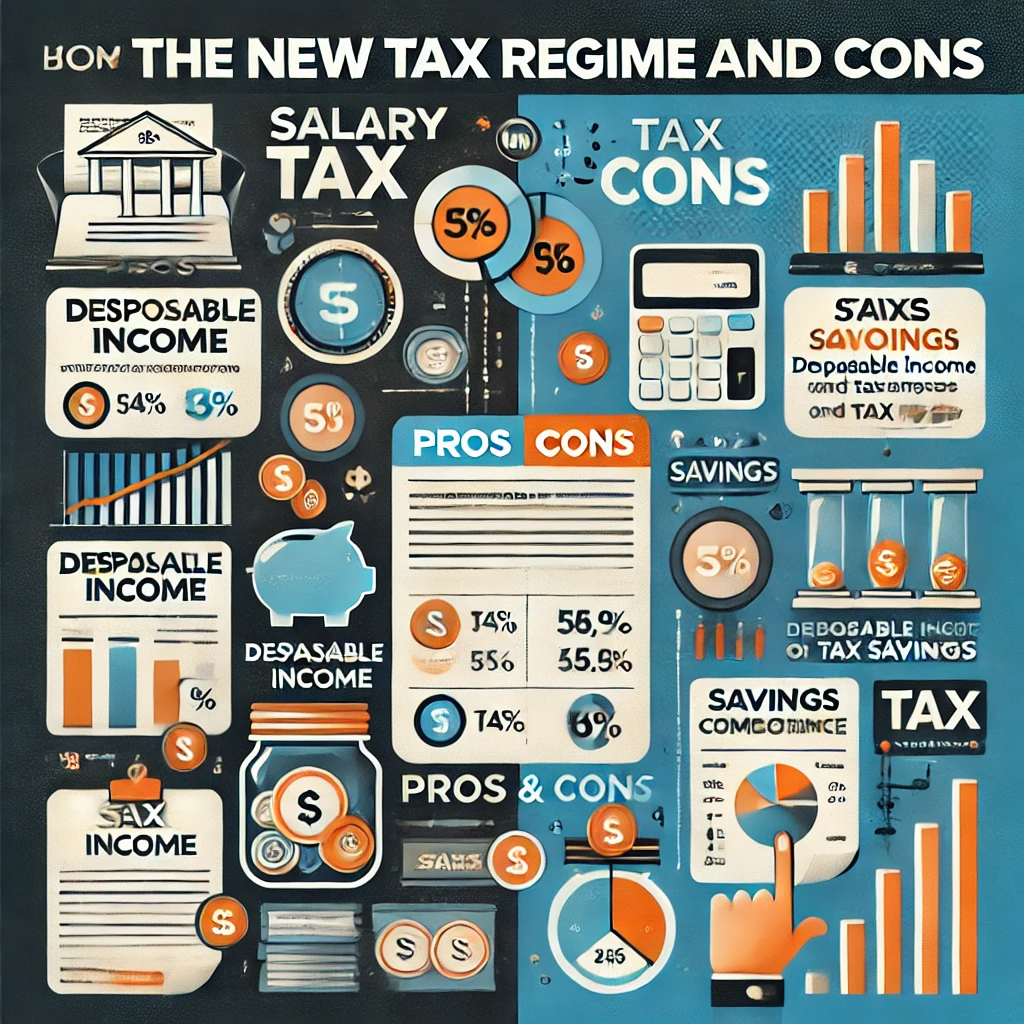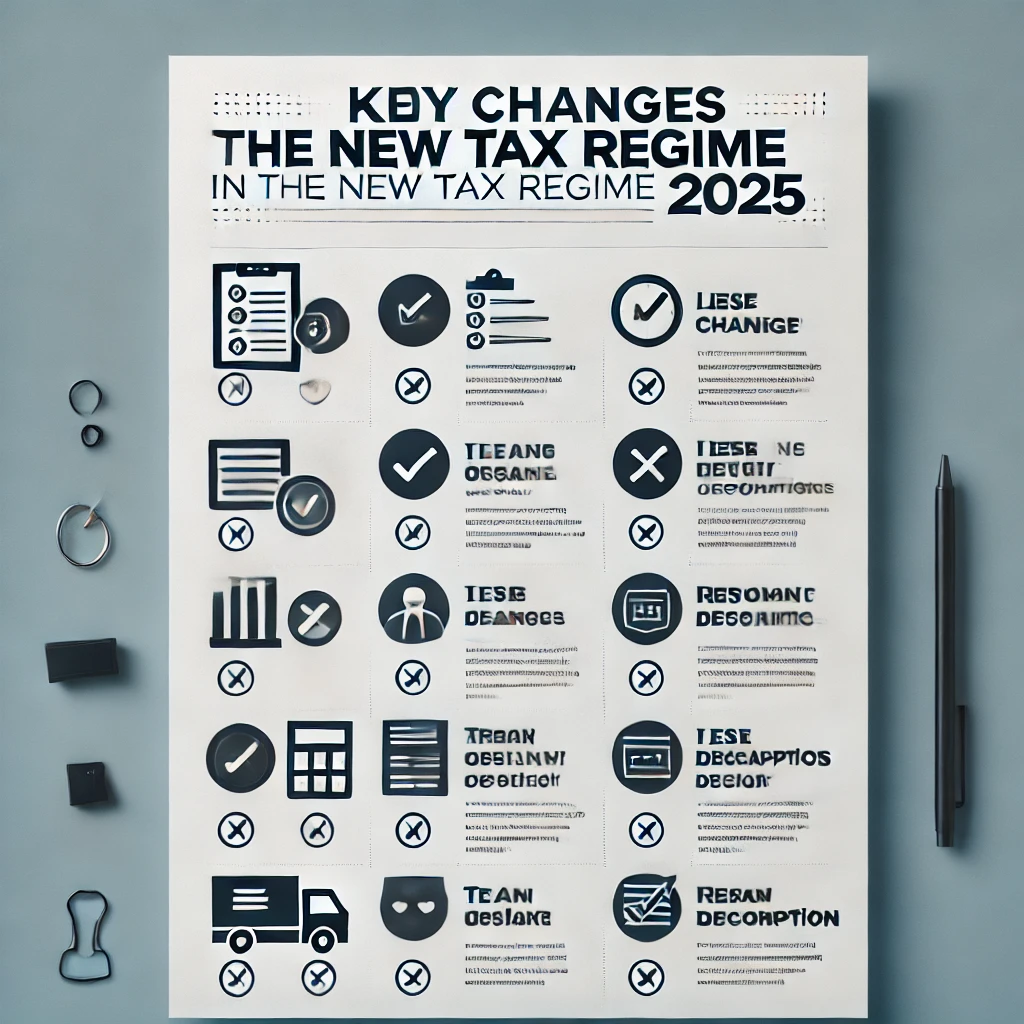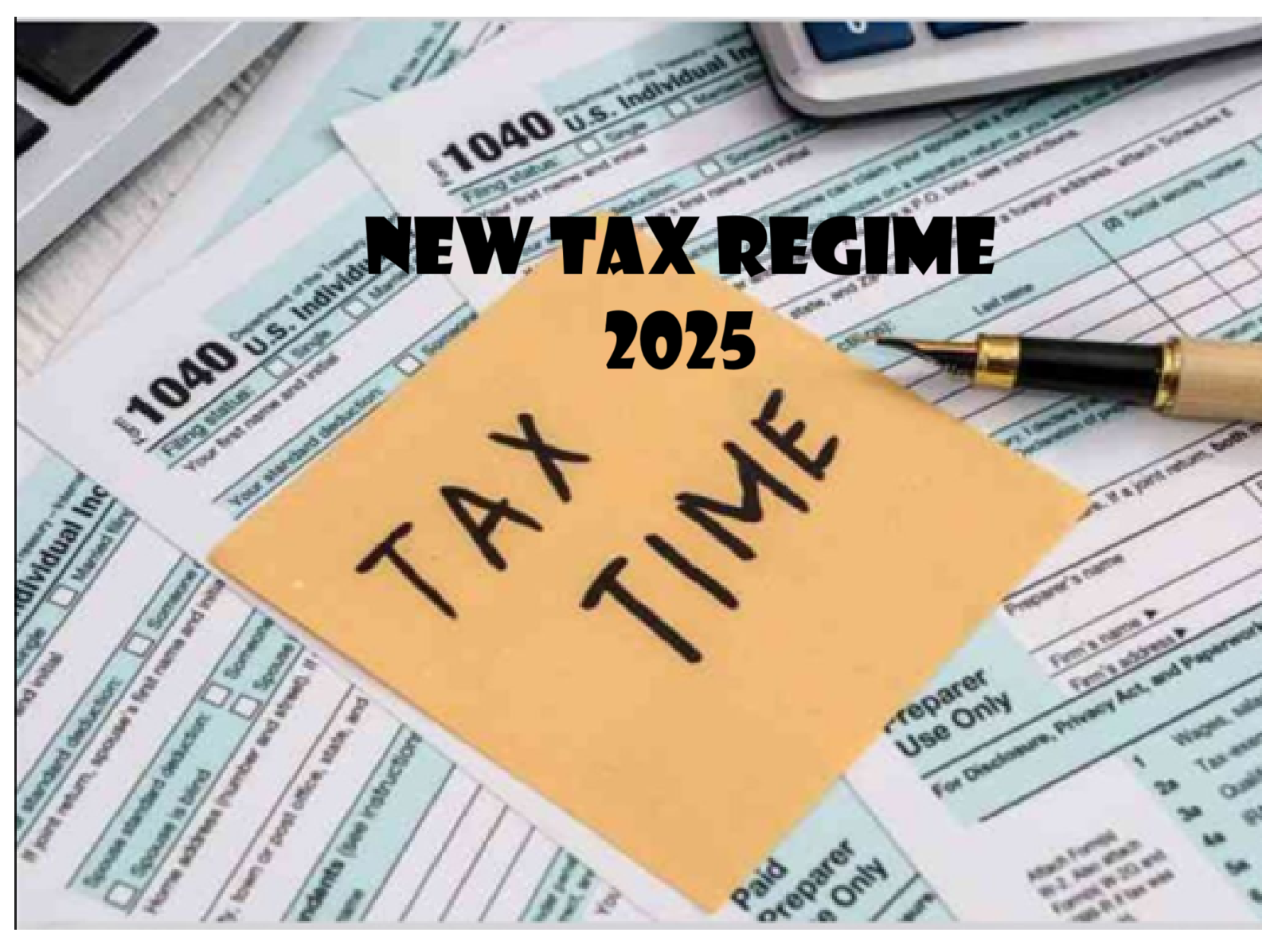The Indian Union Budget 2025, presented by Finance Minister Nirmala Sitharaman, is a forward-looking financial blueprint aimed at fostering economic growth, simplifying taxation, and addressing the needs of various sectors. With a focus on inclusivity, sustainability, and innovation, the budget seeks to balance fiscal prudence with strategic investments to propel India towards becoming a $5 trillion economy.
The budget has introduced a slew of changes in the tax regime, aiming to simplify the tax structure, boost disposable income, and encourage savings. The new tax regime 2025 is a significant shift from the previous system, with a focus on reducing tax burdens for the working class while promoting economic growth. This article delves into the key features of the new tax regime, its implications for the working class, and how it aligns with the government’s vision of a progressive and taxpayer-friendly economy.
Key Highlights of the Budget 2025
- Tax Reforms:
- The new tax regime 2025 introduces lower tax rates and fewer slabs, reducing the highest tax rate from 30% to 25% for income above ₹15 lakh.
- Several exemptions and deductions, such as HRA, LTA, and Section 80C, have been removed to simplify the tax structure.
- A standard deduction of ₹50,000 has been retained for salaried individuals.
- Boost to Infrastructure:
- A significant allocation of ₹11.11 lakh crore has been made for infrastructure development, including roads, railways, and urban projects.
- Emphasis on green energy infrastructure, with investments in solar, wind, and hydrogen energy projects.
- Agriculture and Rural Development:
- Increased allocation for the PM-KISAN scheme, providing direct income support to farmers.
- Focus on rural electrification, irrigation projects, and cold storage facilities to reduce post-harvest losses.
- Healthcare and Education:
- Expansion of the Ayushman Bharat scheme to cover more beneficiaries.
- Increased funding for research and development in healthcare and pharmaceuticals.
- Higher allocation for the National Education Policy (NEP) implementation, focusing on digital education and skill development.
- MSMEs and Startups:
- Extension of tax holidays and credit guarantee schemes for MSMEs and startups.
- Introduction of a new fund to support innovation and technology-driven enterprises.
- Sustainability and Climate Action:
- Launch of the National Green Hydrogen Mission to promote clean energy.
- Incentives for electric vehicle (EV) adoption and manufacturing.
- Allocation for afforestation and water conservation projects.
- Digital Economy:
- Promotion of digital payments and fintech innovations.
- Expansion of the Digital India initiative, with a focus on rural connectivity and cybersecurity.
- Defense and Internal Security:
- Increased defense budget to modernize armed forces and enhance border infrastructure.
- Allocation for advanced surveillance systems and cybersecurity measures.
- Social Welfare:
- Enhanced allocations for women and child development programs.
- Expansion of the National Rural Employment Guarantee Scheme (NREGS) to provide more employment opportunities.
- Fiscal Deficit:
- The fiscal deficit target has been set at 5.3% of GDP, reflecting a balance between growth and fiscal consolidation.
Table of Contents
New Tax Regime 2025 in the Indian Union Budget – Impact on the Working Class.
Understanding the New Tax Regime 2025.
Key Features of the New Tax Regime 2025.
Overall Impact of the Budget 2025.
Pros and Cons of the New Tax Regime 2025.
Comparison Table: Tax Slabs (Union Budget 2024 vs. 2025)
Comparison Table: Old Tax Regime vs. New Tax Regime (Salary = ₹10 Lakh)
Top 30 Changes in the New Tax Regime 2025.
Understanding the New Tax Regime 2025
The new tax regime 2025 is designed to provide taxpayers with a simplified and more transparent tax structure. It eliminates several exemptions and deductions available under the old regime, offering lower tax rates in return. The primary objective is to reduce compliance burdens and make the tax system more efficient.
For the working class, the new tax regime 2025 brings both opportunities and challenges. While lower tax rates may increase take-home pay, the removal of popular deductions could impact long-term savings and investments. Let’s explore the key changes and their implications in detail.
Key Features of the New Tax Regime 2025
- Reduced Tax Slabs: The new regime introduces fewer tax slabs, making it easier for taxpayers to calculate their liabilities. The highest tax rate has been reduced to 30% for income above ₹15 lakh, down from the previous 30% for income above ₹10 lakh.
- Removal of Exemptions: Popular exemptions like House Rent Allowance (HRA), Leave Travel Allowance (LTA), and deductions under Section 80C (up to ₹1.5 lakh) are no longer available under the new regime.
- Standard Deduction: A standard deduction of ₹50,000 has been reintroduced for salaried individuals, providing some relief despite the removal of other exemptions.
- Tax Rebates for Low-Income Groups: Individuals earning up to ₹7.5 lakh annually are eligible for a tax rebate, effectively making their income tax-free.
- Simplified Compliance: The new regime aims to reduce paperwork and streamline the filing process, making it more user-friendly.

Overall Impact of the Budget 2025
- On Individuals: The new tax regime offers lower tax rates but removes popular deductions, impacting long-term savings. However, increased disposable income may boost consumption.
- On Businesses: MSMEs and startups benefit from extended tax holidays and credit support, while infrastructure investments create opportunities for construction and allied sectors.
- On Economy: The budget’s focus on infrastructure, green energy, and digital transformation is expected to drive economic growth and job creation.
- On Sustainability: Initiatives like the Green Hydrogen Mission and EV incentives align with India’s commitment to achieving net-zero emissions by 2070.
Impact on the Working Class
The new tax regime 2025 has a mixed impact on the working class. Here’s a detailed analysis:
- Increased Disposable Income: With lower tax rates, salaried individuals may see an increase in their take-home pay. This could lead to higher consumption and savings, boosting the economy.
- Loss of Savings Opportunities: The removal of deductions under Section 80C, 80D, and others may discourage long-term savings and investments in instruments like PPF, ELSS, and insurance.
- Shift in Financial Planning: Taxpayers will need to reevaluate their financial strategies, focusing on post-tax returns rather than tax-saving instruments.
- Impact on Middle-Income Groups: Middle-income earners (₹10-20 lakh) may benefit from the reduced tax rates, but the loss of exemptions could offset these gains.
- Encouragement for Formal Employment: The simplified tax structure may encourage more individuals to join the formal workforce, reducing the informal sector’s dominance.
Pros and Cons of the New Tax Regime 2025
Pros:
- Simplified tax structure with lower rates.
- Reduced compliance burden.
- Increased disposable income for taxpayers.
- Encourages transparency and ease of doing business.
Cons:
- Loss of popular deductions and exemptions.
- Potential reduction in long-term savings.
- Limited benefits for high-income groups.
Comparison Table: Tax Slabs (Union Budget 2024 vs. 2025)
We can compare the two tax slabs here –
| Income Range (₹) | Tax Rate (2024) | Tax Rate (2025) | Change |
| Up to ₹3 lakh | 0% | 0% | No change |
| ₹3 lakh – ₹6 lakh | 5% | 5% | No change |
| ₹6 lakh – ₹9 lakh | 10% | 10% | No change |
| ₹9 lakh – ₹12 lakh | 15% | 15% | No change |
| ₹12 lakh – ₹15 lakh | 20% | 20% | No change |
| Above ₹15 lakh | 30% | 25% | Reduced from 30% to 25% |
Key Notes:
- The new tax regime 2025 reduces the highest tax rate from 30% to 25% for income above ₹15 lakh.
- Tax slabs for income up to ₹15 lakh remain unchanged.
Comparison Table: Old Tax Regime vs. New Tax Regime (Salary = ₹10 Lakh)
| Parameter | Old Tax Regime | New Tax Regime (2025) | Remarks |
| Tax Slabs | Progressive slabs with higher rates for income above ₹10 lakh. | Fewer slabs with reduced rates for income above ₹15 lakh. | New regime simplifies slabs and lowers the highest tax rate. |
| Standard Deduction | ₹50,000 | ₹50,000 | Standard deduction remains the same in both regimes. |
| Section 80C Deductions | Up to ₹1.5 lakh (e.g., PPF, ELSS, life insurance premiums, etc.). | Not available | Loss of ₹1.5 lakh deduction in the new regime. |
| HRA Exemption | Available (based on rent paid, salary, and city of residence). | Not available | Loss of HRA exemption in the new regime. |
| LTA Exemption | Available (for travel expenses, twice in a block of 4 years). | Not available | Loss of LTA exemption in the new regime. |
| Health Insurance (80D) | Up to ₹25,000 (₹50,000 for senior citizens). | Not available | Loss of health insurance deductions in the new regime. |
| Taxable Income | ₹10 lakh – ₹1.5 lakh (80C) – ₹50,000 (standard deduction) = ₹8 lakh | ₹10 lakh – ₹50,000 (standard deduction) = ₹9.5 lakh | Higher taxable income in the new regime due to loss of deductions. |
| Tax Liability | ₹1.12 lakh (after deductions and exemptions). | ₹1.17 lakh (after standard deduction). | Slightly higher tax liability in the new regime for ₹10 lakh income. |
| Take-Home Pay | ₹8.88 lakh | ₹8.83 lakh | Marginal reduction in take-home pay under the new regime. |
| Flexibility | Allows taxpayers to claim multiple exemptions and deductions. | No exemptions or deductions, but lower tax rates. | New regime is simpler but less flexible. |
Key Takeaways
- Old Tax Regime: Better for individuals who can maximize deductions under Section 80C, HRA, and other exemptions.
- New Tax Regime (2025): Suitable for those who prefer simplicity and do not want to invest in tax-saving instruments.
- Impact on ₹10 Lakh Salary: The new regime results in a slightly higher tax liability due to the loss of deductions, but the difference is marginal.

Top 30 Changes in the New Tax Regime 2025
- Reduction in the number of tax slabs.
- Highest tax rate reduced to 30% for income above ₹15 lakh.
- Removal of HRA exemption.
- Removal of LTA exemption.
- No deductions under Section 80C.
- No deductions under Section 80D for health insurance.
- Standard deduction of ₹50,000 reintroduced.
- Tax rebate for income up to ₹7.5 lakh.
- Simplified tax filing process.
- No deductions for education loans (Section 80E).
- No deductions for home loan interest (Section 24).
- No exemptions for NPS contributions (Section 80CCD).
- No deductions for disability (Section 80U).
- No deductions for donations (Section 80G).
- Lower tax rates for senior citizens.
- No exemptions for savings account interest (Section 80TTA).
- No deductions for medical treatment (Section 80DDB).
- No exemptions for transport allowances.
- No deductions for entertainment allowances.
- No exemptions for professional tax.
- No deductions for interest on savings certificates.
- No exemptions for agricultural income.
- No deductions for royalty income.
- No exemptions for dividends.
- No deductions for capital gains.
- No exemptions for gratuity.
- No deductions for leave encashment.
- No exemptions for voluntary retirement schemes.
- No deductions for interest on education loans.
- Introduction of a flat tax rate for freelancers.
Conclusion
The new tax regime 2025 is a bold step towards simplifying India’s tax system and reducing the burden on the working class. While it offers lower tax rates and increased disposable income, the removal of key deductions may impact long-term financial planning. Taxpayers must carefully evaluate their options and choose the regime that best suits their financial goals.
As the government continues to refine the tax structure, the new regime is expected to play a pivotal role in shaping India’s economic future. By balancing simplicity and taxpayer benefits, the new tax regime 2025 aims to create a more inclusive and growth-oriented economy. The Union Budget 2025 is a progressive and balanced financial plan that addresses the needs of a growing economy while prioritizing sustainability and inclusivity. By simplifying taxation, boosting infrastructure, and promoting innovation, the budget lays the foundation for India’s long-term growth and development. While challenges remain in implementation, the budget’s vision reflects the government’s commitment to building a resilient and prosperous India.
Top Reads






